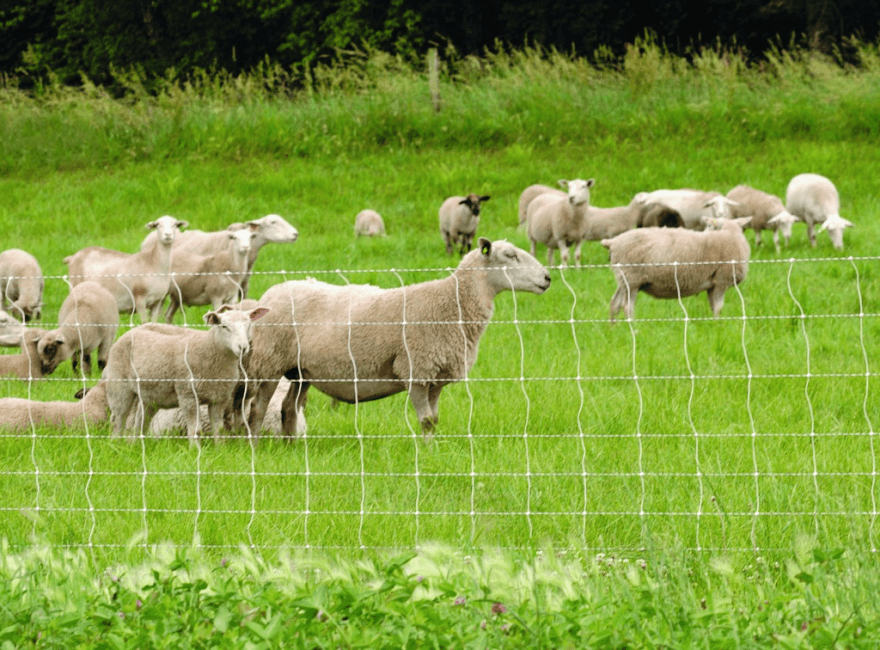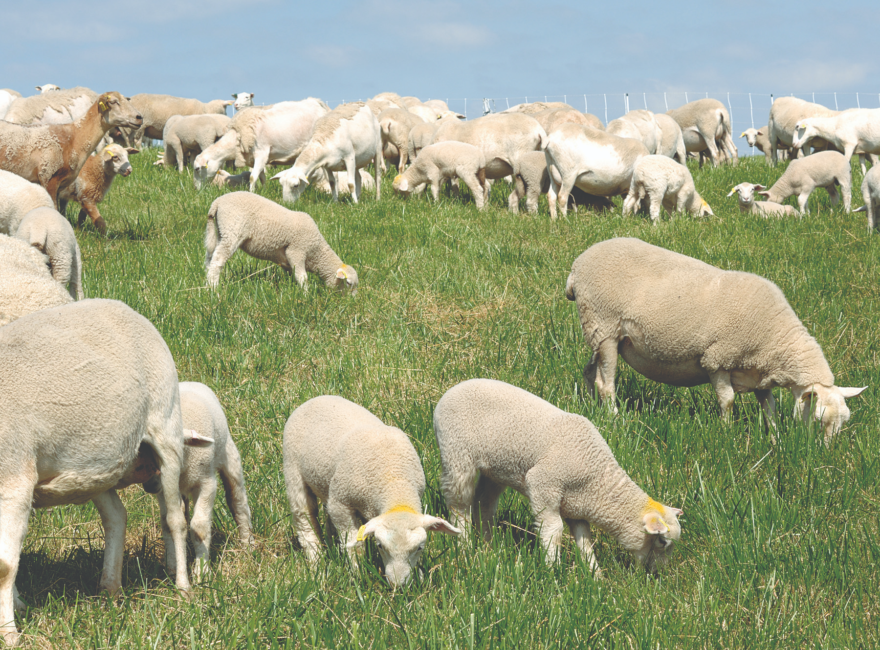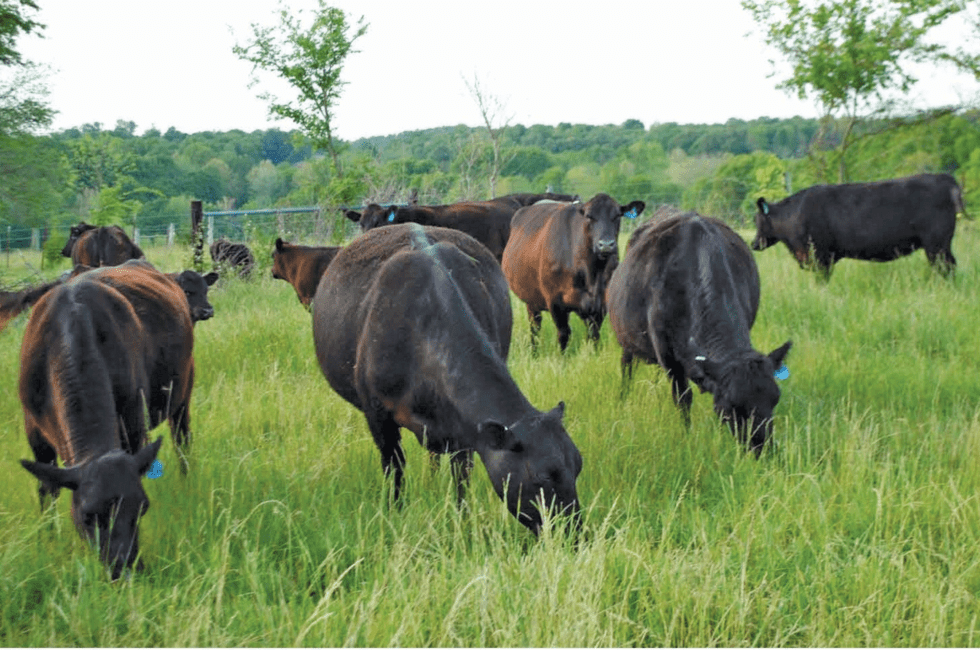The best way to control ruminants from destroying grasses where they graze is to do what is called rotational grazing. If you have a fenced paddock where your animals do graze, it is not good to allow them access to the whole of the grasses at the same time. Some portion should be reserved while the other is being grazed on by the animals.
Rotational grazing is any grazing regime that involves the rotation of grazing animals through 2 or more pastures, which are then allowed to rest for any given period. The rise of rotational grazing became obvious as we began to understand the downfalls of continuous grazing.
While continuous grazing often presents itself as the lowest cost, least daily management option that can (at conservative stocking rates) allow for decent individual animal performance, it has its limitations.
In continuously grazed pastures, the grazier has few tools to influence animal behavior, namely the plants which the animals graze, how severely, and at what frequency.
In case of nomadic grazing, the areas of grazing should be rotated regularly to allow grasses maintain their freshness. There could also be times when paddocks are left ungrazed for some time. At this time, grasses can be supplied to them in their housing units and concentrates can also be served to them.
Grasses and other types of forage are consumed by all classes of domestic animals and many classes of wildlife although the various animals do not consume grasses in the same way or in the same amount.
Well-managed forage systems contribute significantly to the sustainability of a farm/ranch operation. This article addresses numerous aspects of sustainable pasture integration, grazing rotation strategies, and management options.
It covers: grazing systems, pasture fertility, changes in the plant community through grazing, weed control, and pasture maintenance. Livestock grazing also impact grass growth and regrowth by trampling, fouling, selecting or rejecting certain plants and pugging the soil.
Read Also: Allowing Ruminants to graze vs providing feeds for them in a confinement, find out which is better

Meanwhile, Cattle, goats, sheep, and even geese may be used to control weeds. Cattle will graze invasive grasses, can trample inedible weed species, and can incorporate native seeds into soil.
Horses can also be used to control invasive grasses, but horses tend to be more selective than cattle. Geese are also useful for the control of invasive grasses, but are more subject to predation than other animals.
Under rotational grazing, only one portion of pasture is grazed at a time while the remainder of the pasture rests. To accomplish this, pastures are subdivided into smaller areas referred to as paddocks and livestock are moved from one paddock to another.
Resting grazed paddocks allows forage plants to renew energy reserves, rebuild vigor, deepen their root system, and give long-term maximum production. For rotational grazing to be successful, the timing of rotations must be adjusted to the growth stage of the forage.
Unfortunately, rotational grazing is often reduced to regular animal shifts from paddock to paddock based on rigid time schedules rather than in response to forage growth rate. Rigid schedules reduce the benefit of rotational grazing. Rotational grazing can be practiced in a variety of intensities.
Systems can range from 2 to 30 or more paddocks. Management intensive rotational grazing involves a higher level of management with greater paddock numbers, shorter grazing periods, and longer rest periods. Generally, more intense management results in greater livestock production per acre.
Read Also: The ideal Time to Take Ruminants out for Grazing
Management intensive rotational grazing will be emphasized on this article because it offers a number of advantages over both continuous grazing and less intensive rotational systems. These include:
- More stable production during poor growing conditions (especially drought).
- Greater yield potential.
- Higher quality forage available.
- Decreased weed and erosion problems, and
- More uniform soil fertility levels.
There are many names for intensive rotational grazing: Voisin grazing, Hohenheim grazing, intensive grazing management, management intensive grazing, short duration grazing, Savory systems, strip grazing, controlled grazing, and high-intensity, low-frequency grazing. Although each term implies slight differences in management, they all refer to some sort of intensive rotational grazing system.
Importance of Using Rotational Grazing

1. Increased pasture productivity
Rotational grazing can help improve long-term pasture quality and fertility by favoring desirable pasture species and allowing for even manure distribution. Rotational grazing also can increase the amount of forage harvested per acre over continuous grazing by as much as 2 tons dry matter per acre.
2. Aesthetics and human health benefits
One of the greatest advantages to using rotational grazing is that it is a “peaceful way of farming.” It is quieter than mechanically harvesting your feed and it gives you the excuse to stretch your legs and take a look at what’s happening in your pasture. You might even hear the birds singing or see a deer grazing as you move the fence.
3. Animal Health and Welfare
Animals in grazing systems are often healthier than animals housed in confinement. Animals have more space and fresh air, reducing their exposure to high levels of micro-organisms. Increased freedom for movement enhances physical fitness and decreases opportunity for injuries and abrasions.
However, risks associated with exposure to severe weather or predators may be increased in grazing. Many have reported fewer herd health problems after switching to grazing. For many graziers, culling animals for health reasons has dropped from about 35% of the herd annually to approximately 10%.
A healthier herd is more profitable and it allows the option of increasing herd size or improving the herd by selecting animals based on higher milk production or reproductivity.
Read Also: How Often to Clean a Ruminant Pen
4. Plant Yield and Quality
Forage growth is slow when plants are small and have few leaves (early spring growth or after grazing) and yield is low. As leaves get bigger, photosynthesis increases dramatically, allowing for rapid growth and increased yields. Prior to flowering, most pasture plants are growing as fast as possible if other factors are not limiting.
As plants mature, growth slows since most energy is diverted to flower and seed production. While yield is highest at heading, quality is very low. Quality is high when plants are small and vegetative and declines as plants mature.
This occurs because, as plants get larger and stemmier, a greater percentage of nutrients and dry matter is tied up in undigestible forms such as lignin. Greater amounts of undigestible fiber result in lower quality forage with decreased amounts of total digestible nutrients (TDN).
The goal of a good grazing program should be to maximize both forage yield and quality.
Species develop differently however and the best time to graze one grass species may not be the best for another. For advice on ideal grazing heights and rest periods for various species, see the section on “Length of Rest Periods.”
5. Grass growth patterns
In the seeding year, grass seeds germinate and give rise to a single shoot. As the season progresses additional shoots called tillers develop. Removing the top growth through grazing or mowing encourages tillering. Some species such as orchard-grass, tall fescue, and ryegrass form tillers from buds on the original shoot.
These are called bunch-type grasses as the tillers stay fairly close together and form discreet bunches in the field. Other grasses tiller by sending out short rhizomes which form new shoots.
These grasses are known as sod-forming grasses as they form a dense sod in the field. Tillering continues throughout the seeding year and the plants enlarge.
Most cool-season grasses (with the exception of timothy) don’t form seed heads in the seeding year. Buds that form in late summer are the next year’s flower buds. They must be exposed to cold temperatures during winter (vernalized) to produce flowers the following year.
Read Also: 4 Steps to help an Orange Tree Produce Sweet Oranges

Rotational grazing is a system where a large pasture is divided into smaller paddocks allowing livestock to be moved from one paddock to the other easily. Using this method cattle are concentrated on a smaller area of the pasture for a few days then moved to another section of pasture.
This movement allows the grazed paddock a rest period that permits forages to initiate regrowth, renew carbohydrate stores, and improve yield and persistency. When utilized properly, rotational grazing can help farmers increase forage productivity.
Rotational grazing can help improve productivity, weight gain or milk production per acre, and overall net return to the farm. Rotational grazing allows for better manure distribution that acts as a source of nutrients to the soil. Rotational grazing also has the potential to reduce machinery cost, fuel, supplemental feeding and the amount of forage wasted.
The disadvantages of rotational grazing include the need for more fence to be constructed, time required to move cattle, and the need to have water and access to shade from each smaller paddock.
The use of temporary fence is an inexpensive way to divide fields into the smaller paddocks and can be moved based upon the producers’ preference. If additional watering sources are needed they can be added by using plastic pipe placed on top of the ground from a current water source to the desired location.
Rotational grazing can help extend the grazing season, allowing a producer to rely less on stored feed and supplement. One of the most desirable attributes of this system is that a producer can design it to fit their needs. Rotational grazing allows a producer to be more in control of the timing and intensity of forage grazed by cattle.
For those wanting to start using this system try taking one pasture and dividing it in half to begin with. If you see an improvement, divide it again the next year, or try dividing another pasture in half.
For those who use this method it may take several years to figure out exactly what works best . Using temporary fence materials and portable watering tanks allows a producer to experiment with different paddock sizes and watering systems.
Read Also: 3 Types of Grazing Management Systems





